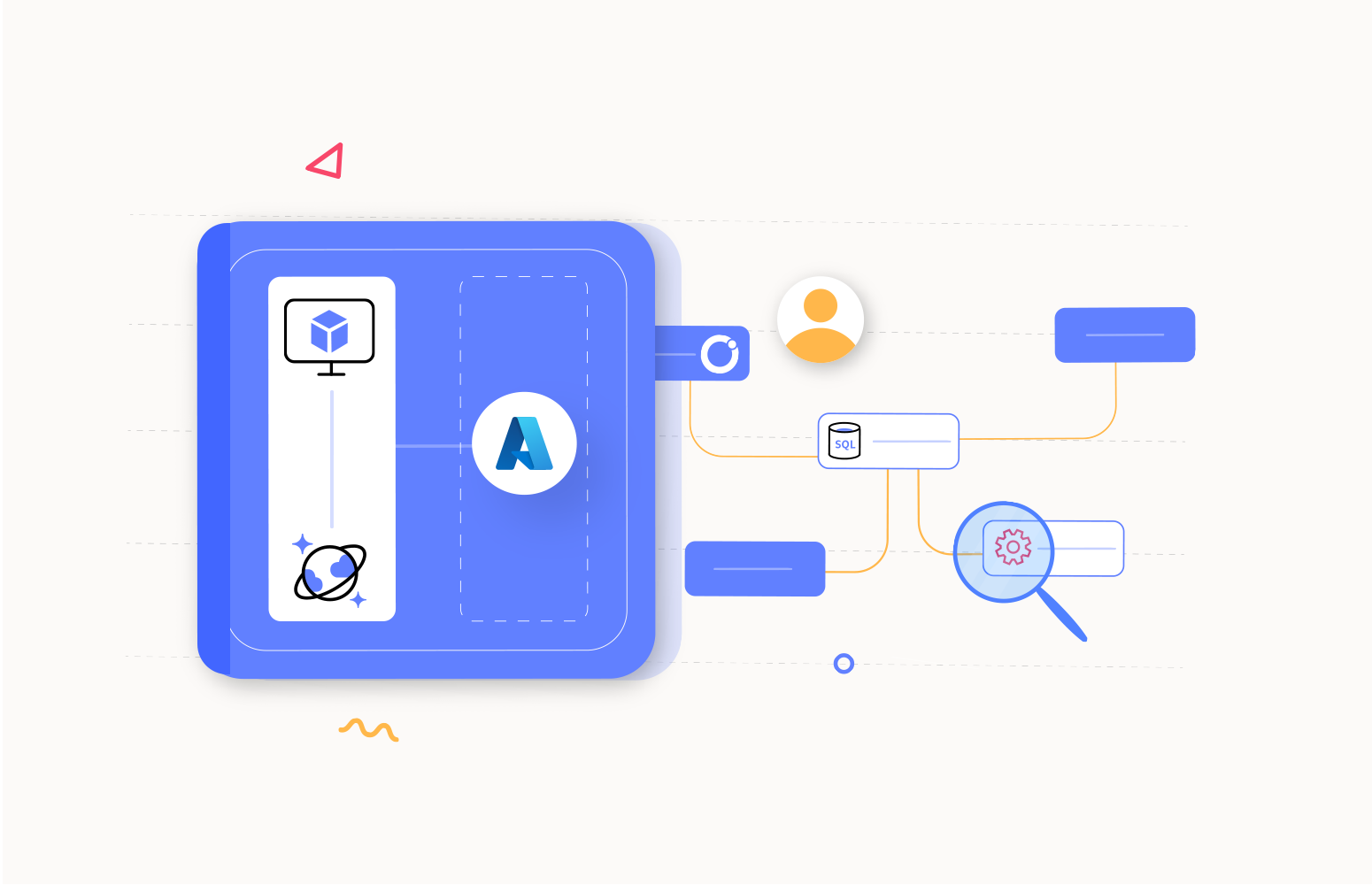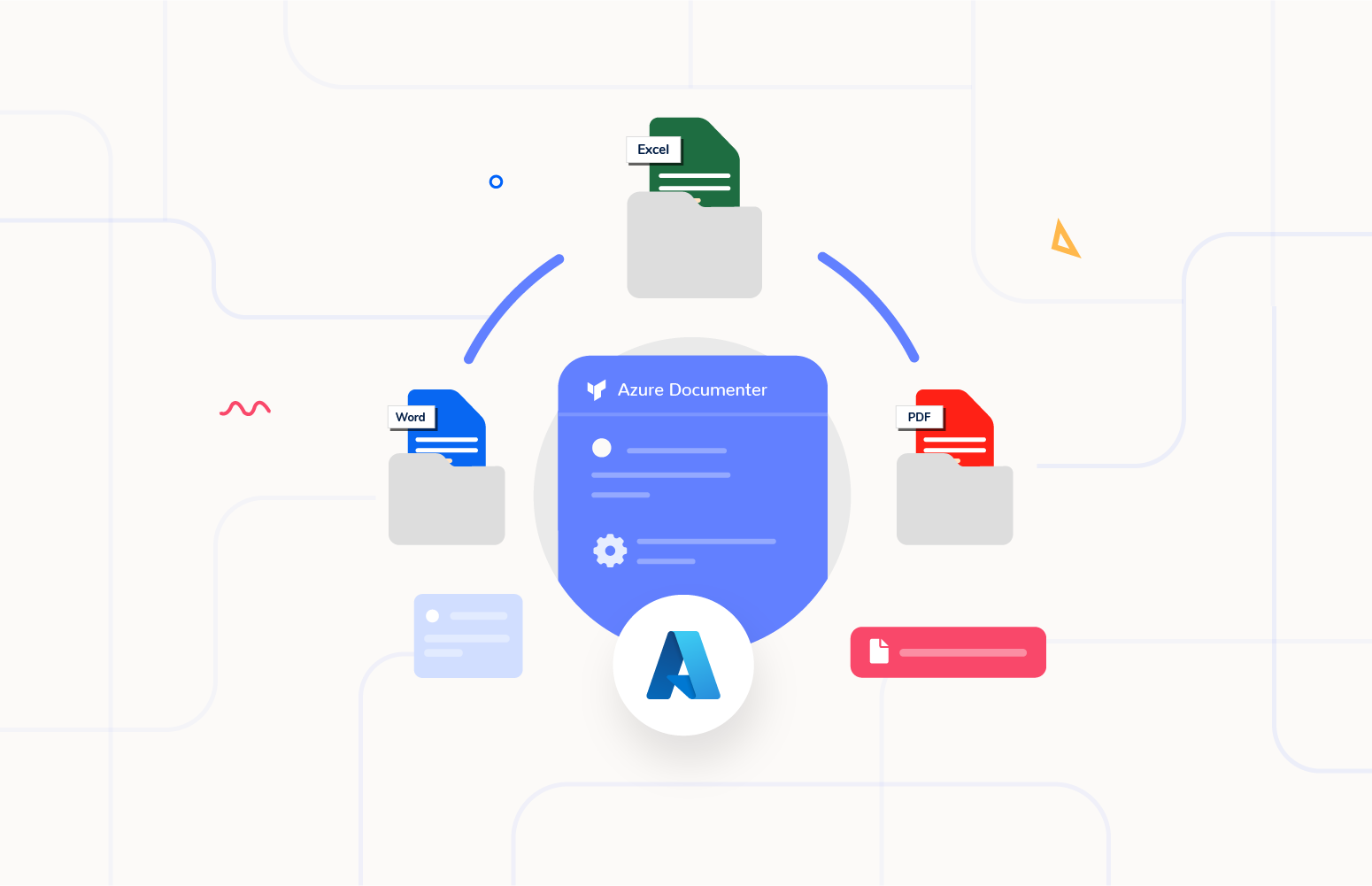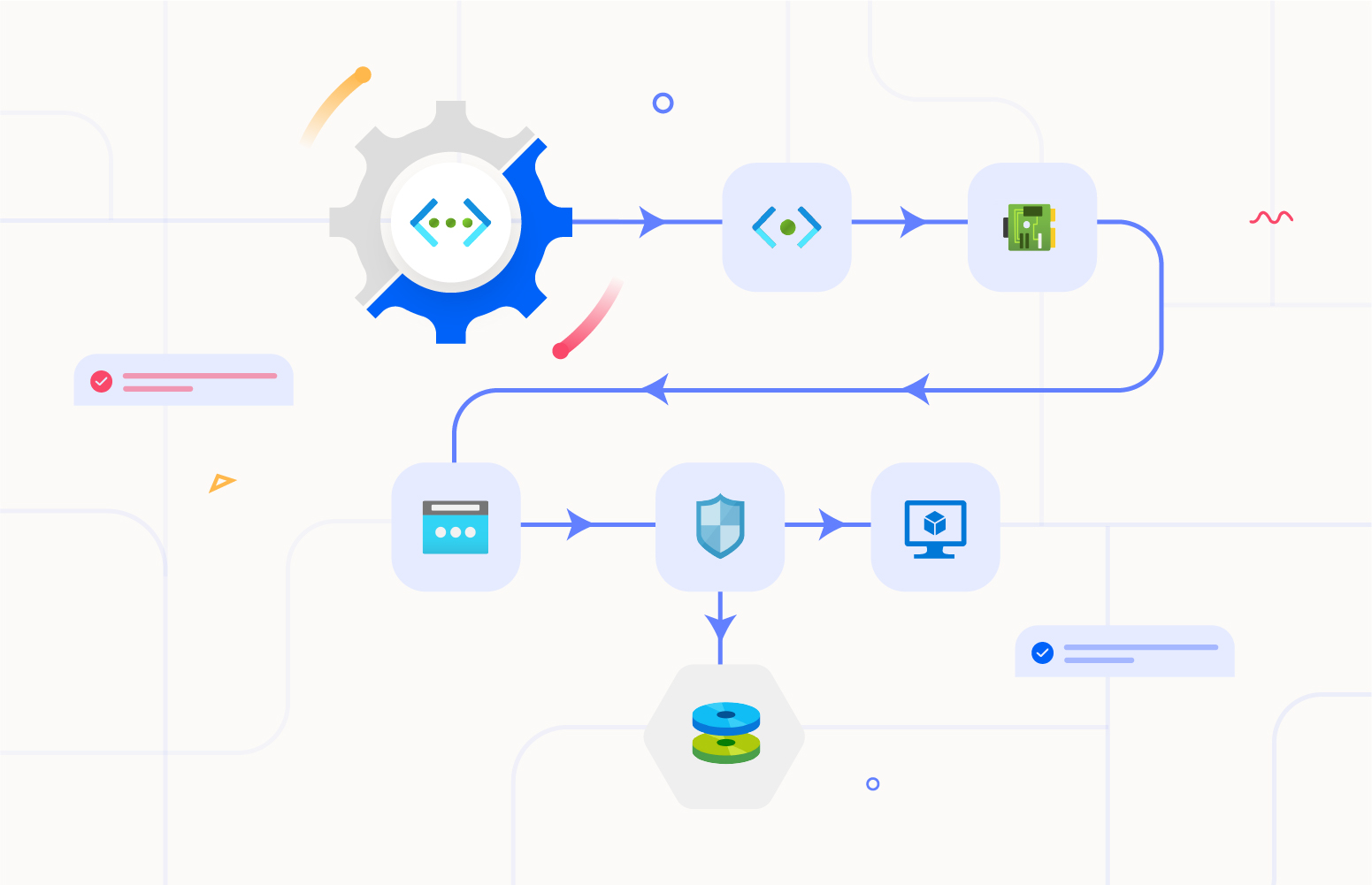What are Azure architecture diagrams?
Azure architecture diagrams are visual representations that illustrate the structure, components, and relationships of a solution or application deployed on Microsoft Azure. These diagrams provide a clear and concise overview of the various Azure resources and services used in a specific architecture. They are helpful for design discussions, documentation, and communication among team members and stakeholders.
What are the components of Azure architecture diagrams?
Azure architecture diagrams typically consist of the following components:
- Azure Services: Representations of the Azure services used in the architecture, like virtual machines, databases (Azure SQL Database, Cosmos DB, etc.), networking components (Virtual Network, Load Balancers), containers (Azure Kubernetes Service), and more.
- Resource Relationships: Arrows or lines connecting different Azure resources to indicate how they interact with each other. This represents the flow of data or communication between components. When discussing complex solutions with team members, clients, or other stakeholders, a well-constructed Azure cloud architecture diagram ensures everyone is on the same page, reducing misunderstandings and improving communication.
- Networking: Diagrams often include details about the virtual networks, subnets, security groups, and other networking aspects to illustrate how the different resources are connected and secured.
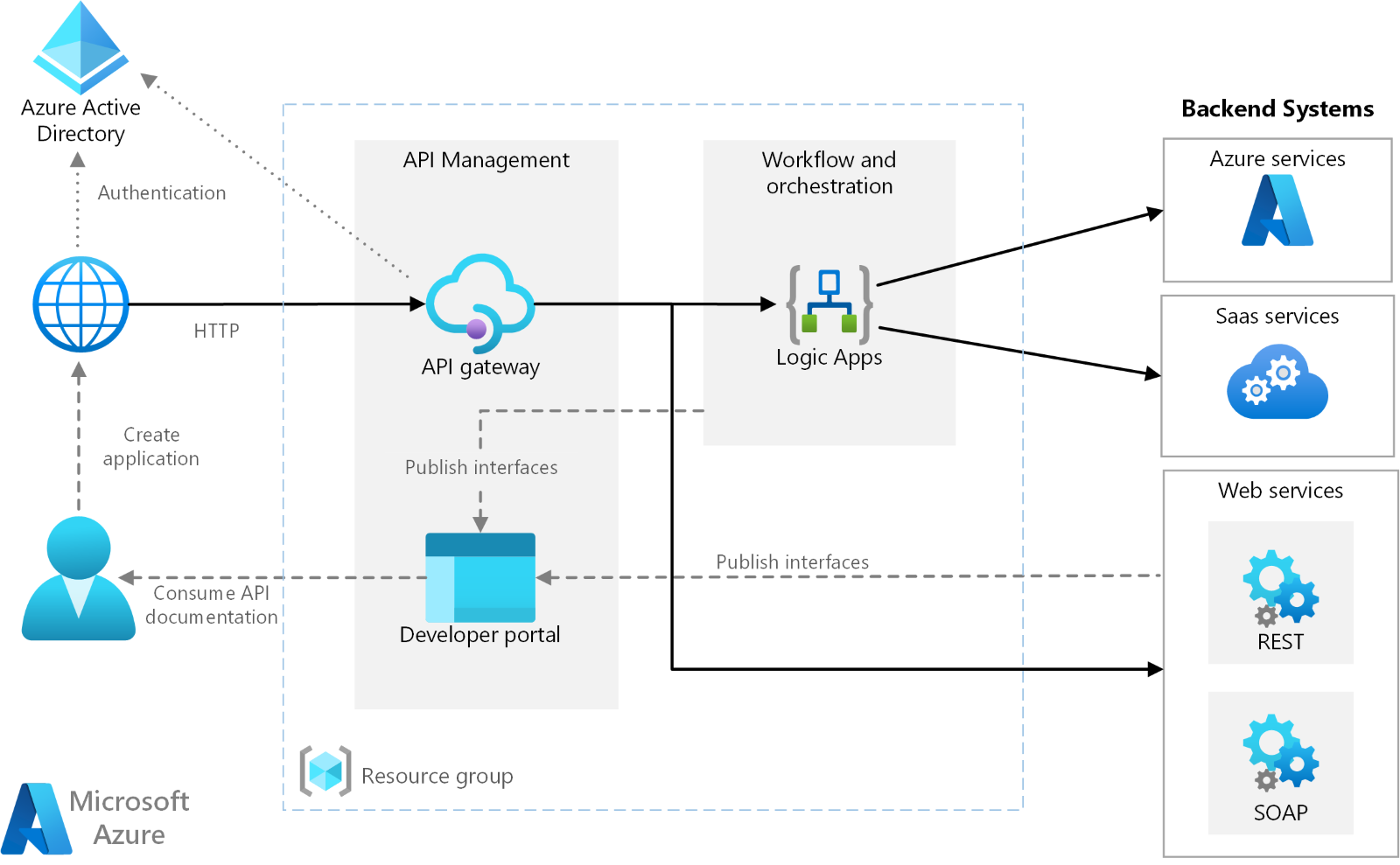
Why are architecture diagrams necessary?
Architecture diagrams are easy to understand when it comes to understanding complex cloud infrastructure. It provides a visual representation of the architecture, making it much easier for both technical and non-technical stakeholders to understand how different components of the solution are connected and how they interact. Architecture diagrams are also helpful for cloud security, tracking any changes within cloud infrastructure, and viewing if in case of any vulnerabilities, etc.
Enterprise architects and IT experts within organizations using cloud services often depend on cloud diagrams. The necessity and frequency of updating these architectural diagrams rely on the scale of the cloud environment and the established practices of the company. Nevertheless, it’s always recommended to keep your cloud documentation updated to help with the problems that may arise due to the cloud provider or security threats.
Azure architecture diagrams are essential for the following:
- Clarity and Understanding: Diagrams provide a visual representation of the architecture, making it much easier for both technical and non-technical stakeholders to understand how different components of the solution are connected and interact.
- Effective Communication: Using a well-crafted architecture reduces misinterpretation among team members while discussing complex solutions.
- Design and Planning: Before implementing a solution on Azure, it is crucial to have a clear plan. Azure infrastructure diagrams help architects and engineers design and plan the infrastructure, ensuring all necessary components are considered and the architecture aligns with the project’s goals.
- Documentation: Over time, projects and systems can become complex. Having up-to-date Azure application architecture diagrams as part of the documentation ensures that future maintenance, troubleshooting, or scaling efforts are more manageable. It serves as a reference for how the system is structured.
- Troubleshooting and Debugging: When issues arise, having an architecture diagram can be invaluable. It allows teams to quickly identify potential problem areas and understand the relationships between different components, speeding up the troubleshooting process.
- Security and Compliance: Diagrams help visualize the security measures and identify potential vulnerabilities in the architecture. This is crucial for ensuring that security and compliance requirements are met.
- Scalability and Performance: Architecture diagrams provide a foundation for making best-informed decisions when planning for scalability or performance improvements. Teams can identify potential bottlenecks and plan upgrades or optimizations.
- Decision-Making: When considering changes or enhancements to the system, having a clear understanding of the existing architecture through diagrams helps make informed decisions. It enables teams to assess the impact of changes before implementation.
- Audit and Governance: For organizations with strict auditing or governance requirements, Azure services architecture diagrams provide a documented view of the environment, helping to demonstrate compliance.
How to design Azure Architecture Diagrams?
Architecture diagrams can be designed by many tools available in the market, but none can provide real-time visualization of Azure resources within the architecture. One tool that stands out in simplifying and enhancing this process is Turbo360 Azure Documenter.
Generate Azure Architecture diagrams using Turbo360 Azure Documenter
Turbo360 Azure Documenter tool transforms Azure Subscription data into user-friendly reports based on resources, cost, security, etc.
In addition to the reports, it supports the generation of architecture diagrams manually and automated approaches. This feature empowers architects and developers to gain immediate insights into their complex systems, making it significantly easier to understand the relationships between different components.
Automated tailored diagrams in Azure Documenter
Automated tailored diagrams in Azure Documenter allow customers to define a prototype of the connection between resources in the Azure Subscription. Based on the prototypes, Azure Documenter pulls the Azure resource details in real time and generates diagrams.
For instance, the following is how a VM’s prototype can be defined using the diagram window.
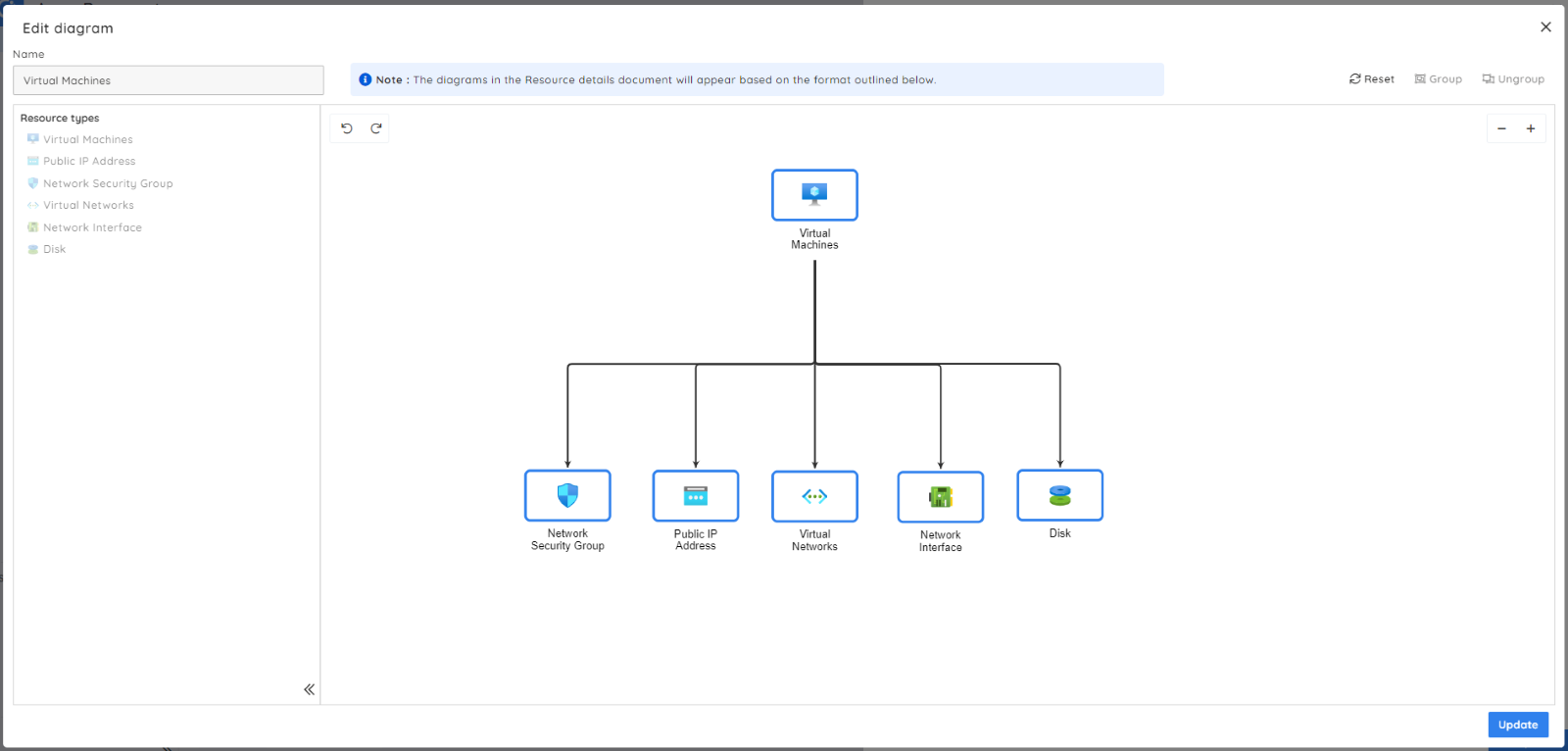
Once the prototype is saved, upon generation of reports, Azure documenter will pull the details of all the Virtual machines in the Azure subscriptions, identify the linked resources like Public IP, Disk, VNet, etc., and map the real-time resources with the prototype and generate the diagrams.
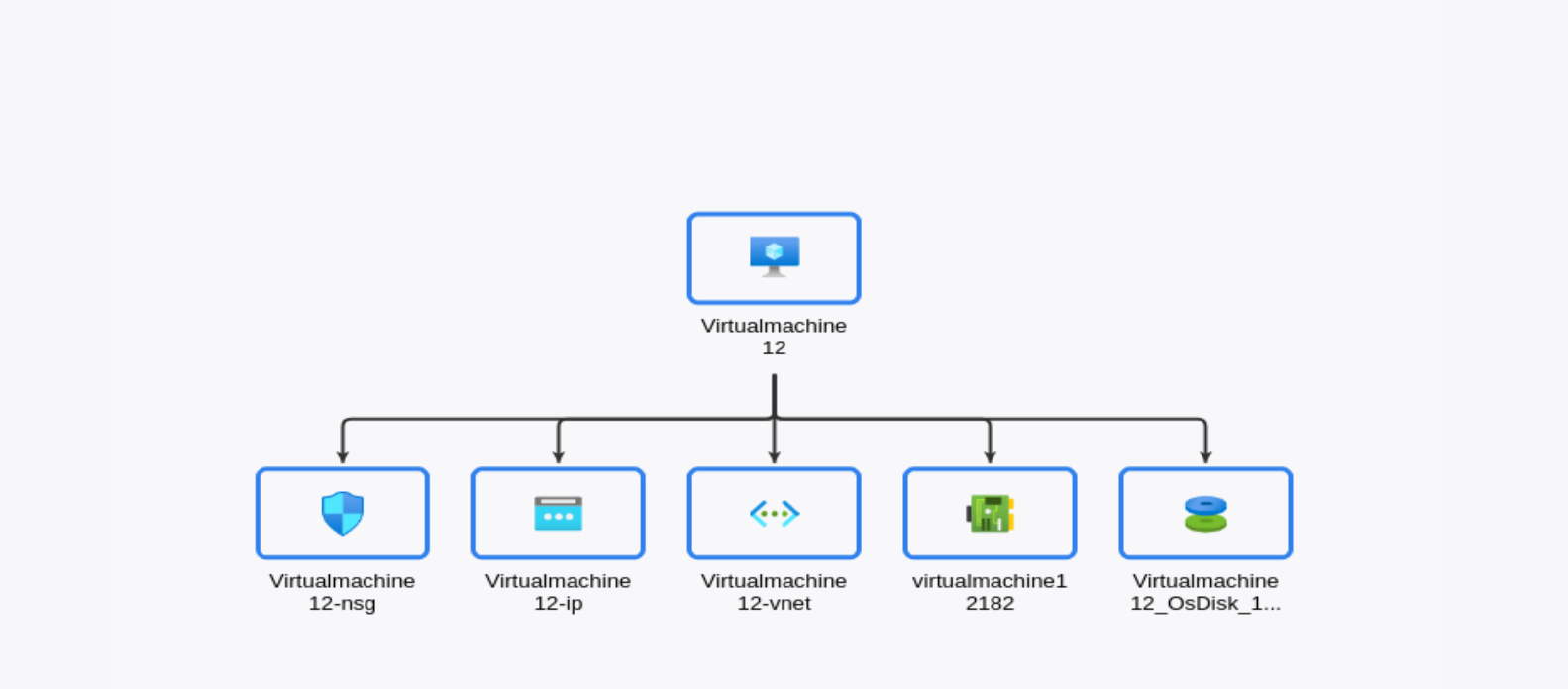
Above is the real-time diagram of one of the Virtual machines in an Azure Subscription. Similarly, a diagram for all the Virtual machines in the associated Azure Subscriptions will be generated. These prototypes can be generated for many resource types like Web apps, Function Apps, Storage Accounts, etc.
Manual diagrams in Azure Documenter
While the tailored diagrams help automatically identify the resource relationship, the capability to generate detailed architecture diagrams helps users efficiently represent a complex system. Manual Diagrams in Azure Documenter help break down complex architectures into visually appealing representations with its user-friendly interface, a rich library of Azure icons, and seamless integration with Azure resources. Diagram also provides a variety of shapes for use in the architecture and Notes for adding critical points to the diagram.
Whether dealing with virtual networks, serverless components, or hybrid integrations, Azure Documenter enables you to encapsulate these complexities into a single, cohesive diagram, which can be further downloaded for reference.
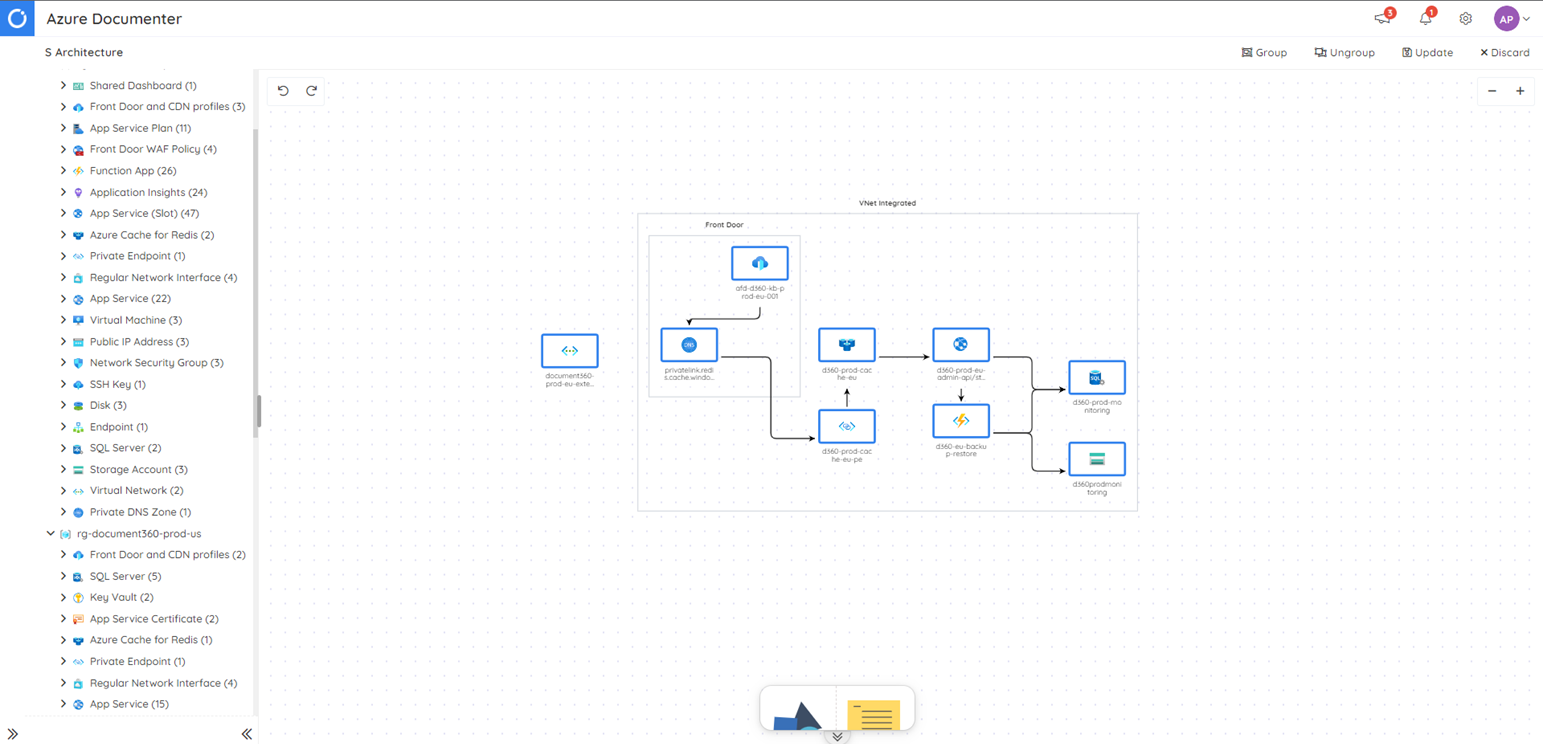
Conclusion
In conclusion, users can meticulously design and customize Azure architecture diagrams through manual diagram creation, tailoring them to specific project requirements. This hands-on process allows for in-depth control over diagram elements and layout. On the other hand, the automated approach streamlines the diagram generation process by dynamically pulling information from the Azure environment. This ensures that diagrams remain current with the actual architecture, eliminating the need for constant manual updates.
With Azure Documenter’s dual capability, users can choose between a meticulous manual creation or an automated, always-accurate depiction of their Azure architectures, catering to diverse preferences and project needs.

